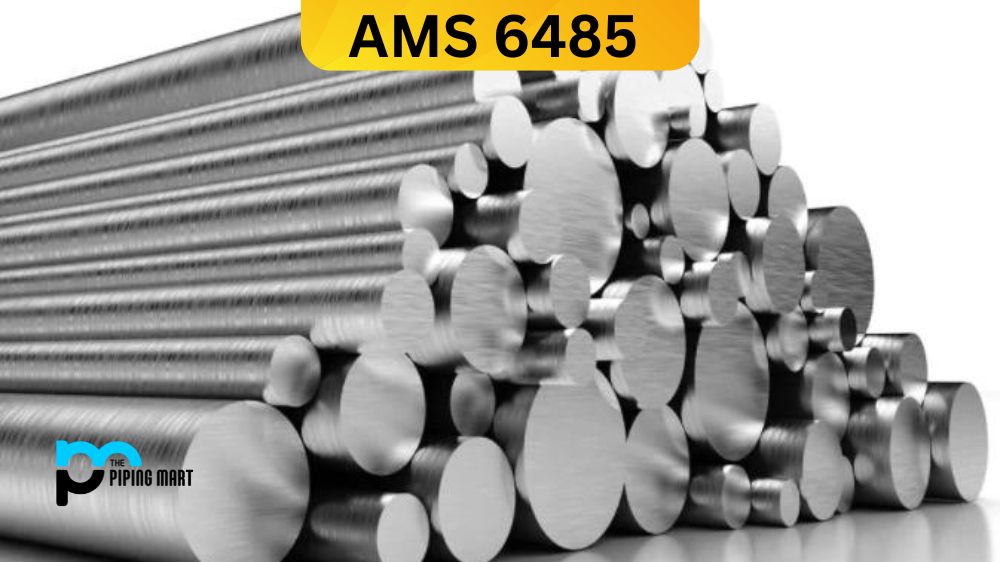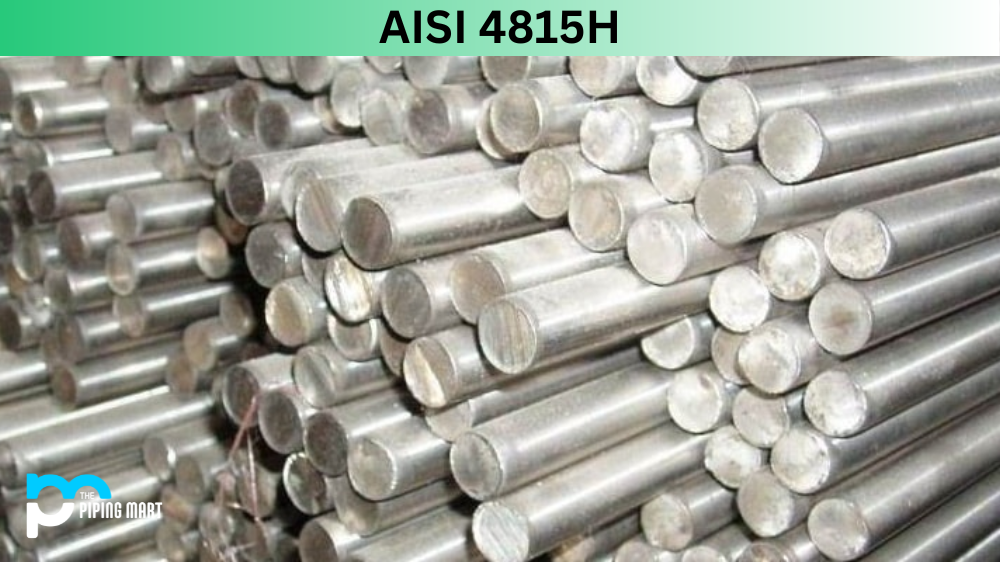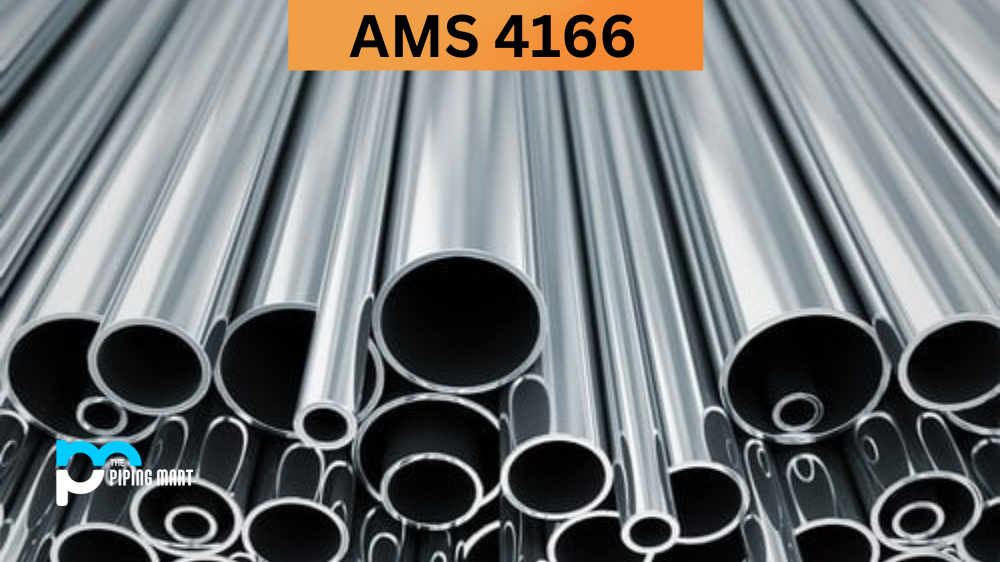AMS 6485 is a popular material used in the aerospace industry. Its unique composition, physical and mechanical properties make it a sought-after material for various applications. This blog post will delve deeper into this material, its uses, and its properties.
What is AMS 6485?
AMS 6485 (also known as Tool Steel H-11) is a high-quality steel alloy that has proven to be incredibly effective in a wide range of applications. Developed by the Aerospace Material Specification Committee, this particular alloy boasts exceptional strength, durability, and resistance to corrosion. Used primarily in aerospace and military technology, AMS6485 has become one of the most sought-after steel alloys today. It’s unique composition and impressive performance make it an ideal choice for various demanding applications where strength and reliability are critical factors. Whether you’re looking to build a new aircraft, construct a military vehicle, or build a high-performance industrial machine, AMS 6485 is an alloy you can’t overlook.
AMS 6485 Composition
AMS 6485 is a low alloy steel that contains 1.8-2.2% nickel, 0.50% chromium, 0.08% carbon, 0.40% molybdenum, and 0.03% máximo of sulfur. The material also contains trace elements of boron and vanadium. The alloy’s chemical composition enhances its properties, making it ideal for high-stress applications.
| Element | Content (%) |
|---|---|
| Carbon, C | 0.33-0.43 |
| Manganese, Mn | 0.20-0.50 |
| Silicon, Si | 0.80-1.20 |
| Chromium, Cr | 4.75-5.50 |
| Nickel, Ni | 0.3 |
| Molybdenum, Mo | 1.10-1.60 |
| Vanadium, V | 0.30-0.60 |
| Copper, Cu | 0.25 |
| Phosphorous, P | 0.03 |
| Sulfur, S | 0.03 |
| Iron, Fe | Balance |
AMS 6485 Physical Properties
AMS 6485 has excellent physical properties, including high tensile strength, fatigue resistance, and toughness. The material has a yield strength of 190ksi and tensile strength of 220ksi. It also has a density of 7.8 g/cc and a melting point of 1410-1450°C.
| Properties | Metric | Imperial |
|---|---|---|
| Density | 7.81 g/cm3 | 0.282 lb/in3 |
| Melting point | 1427°C | 2600°F |
AMS 6485 Mechanical Properties
AMS 6485’s mechanical properties are a crucial reason it is used in the aerospace industry. The material has exceptional strength, durability, and corrosion resistance. AMS 6485 is also highly resistant to wear and tear, making it ideal for highly stressed parts. It is also highly weldable, which simplifies its use in manufacturing.
| Properties | Metric | Imperial |
|---|---|---|
| Hardness, Rockwell C (air cooled from 982°C, 45 mins) | 52.5 | 52.5 |
| Hardness, Rockwell C (air cooled from 1010°C, 45 mins) | 56 | 56 |
| Hardness, Rockwell C (air cooled from 1038°C, 45 mins) | 57 | 57 |
| Modulus of elasticity | 207 GPa | 30000 ksi |
| Modulus of elasticity (@538°C/1000°F) | 159 GPa | 23000 ksi |
| Modulus of elasticity (@204°C/400°F) | 190 GPa | 27500 ksi |
| Charpy impact (V-notch; air cooled from 1010°C;535°C temper temperature) | 13.6 J | 10.0 ft-lb |
| Charpy impact (V-notch; air cooled from 1010°C;650°C temper temperature) | 27.1 J | 20.0 ft-lb |
| Charpy impact (V-notch; air cooled from 1010°C;370°C temper temperature) | 33.9 J | 25.0 ft-lb |
| Machinability (1% carbon steel) | 75.0 – 80.0% | 75.0 – 80.0% |
| Poisson’s ratio | 0.27-0.30 | 0.27-0.30 |
AMS 6485 Equivalents
| AFNOR Z 38 CDV 5 | AMS 6485 | SAE J438 |
| DIN 1.2343 | AMS 6487 | SAE J467 |
| UNI KU | AMS 6488 | UNS T20811 |
| JIS SKD6 | ASTM A681 | AISI 610 |
| B.S. BH 11 | FED QQ-T-570 | ASTM A579 |
| AMS 6437 | SAE J437 | MIL S-47262 |
AMS 6485 Uses
AMS 6485 is used in various aerospace applications, including engine components, landing gear, and structural parts. The material is also used in the petroleum industry for drilling equipment. Its exceptional properties make it ideal for any high-stress application.
AMS 6485 Hardness
AMS 6485 is known for its high hardness that ranges from 38-42 HRC. The high hardness makes it ideal for use in applications that require materials with high wear and abrasion resistance.
AMS 6485 Heat treatment
Heat treatment enhances AMS 6485’s mechanical properties, including strength, flexibility, and toughness. The material is typically heated to 950-1000°C for an hour, followed by a quench in water or oil. Heat treatment ensures the material is highly resistant to wear and tear, making it ideal for high-stress applications.
Conclusion:
AMS 6485 is an excellent material for high-stress applications due to its unique properties. It’s chemical composition, physical and mechanical properties, and excellent resistance to wear and tear make it ideal for various aerospace applications. In addition, the material’s high hardness and the ability to be heat treated make it versatile and useful in many applications. If you have a high-stress application, consider using AMS 6485.

Meet Bhavesh, a seasoned blogger with a wealth of knowledge and experience. From metal products manufacturing to retail, Bhavesh has a diverse background in various industries and is dedicated to sharing his insights and expertise with readers.




